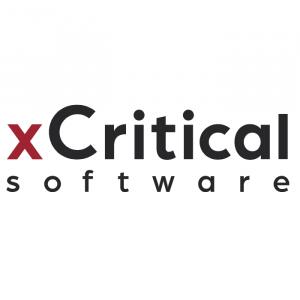Contents:


The secured and programmable nature of AMD platforms empowers the development of systems that can be easily updated to provide enhanced features and image processing capabilities. Using a combination of Vitis Vision Library functions can enable your system to become easily upgraded to meet future needs once a system is deployed. Vitis Vision Library enables you to develop and deploy accelerated computer vision and image processing applications on AMD platforms, while continuing to work at a high abstraction level. FastCV is an open-source image processing, machine learning, and computer vision library.
Therefore, it is possible to prototype your computer vision libraries quickly in a graphical environment and then translate them to C++ or .NET, or even generate the C++ code automatically. Vitis Vision Libraries can be targeted to different resources on AMD devices in order to optimize performance and throughput characteristics to meet the needs of demanding processing pipelines. Either Programmable Logic or AI Engines can be targeted on Versal devices in order to achieve the target throughput rates depending upon application needs and design constraints.
This is achieved through the development of various libraries and processing methods, as well as through the development of computing hardware and specialized processors. There are several libraries of programming languages for image processing and computer vision. These languages are often used on the backend such as Java, C#, or Ruby, and have many libraries to solve problems in this direction. There are also languages for the frontend side like JavaScript. For all, there are many solutions in the form of open-source libraries to use in a project.
The need for digital imaging and computer vision is increasing day by day across all corners of the IT industry. Every day, we experience these solutions as users, not paying that much attention to the complexity and high-tech nature of these hardware and software systems. Join us April 12 and ask experts about NVIDIA cuGraph with added support for GNN, accelerated aggregators, models, and extensions to DGL and PyG. Create virtual collaboration and content creation applications with video effects, audio effects, and augmented reality.
Generative adversary networks novel trends in image processing
The more the quantity and diversity of the training data, the higher the degree of precision. The most well-liked open-source computer vision library for deep learning facial recognition at the moment is DeepFace. The library provides a simple method for using Python to carry out face recognition-based computer vision.
Why Did Journalists Help the Justice Department Identify a Leaker? – The Intercept
Why Did Journalists Help the Justice Department Identify a Leaker?.
Posted: Fri, 14 Apr 2023 01:55:00 GMT [source]
The validation data includes 300 images, and the test data has 1000 images for each category. In this article, we’ve put together a comprehensive list of quality computer vision datasets that you can access for free. OpenCV is a highly optimized library with focus on real-time applications.
Follow these tutorials https://forexhero.info/ the basics of facial applications using Computer Vision. Whether you’re brand new to the world of computer vision and deep learning or you’re already a seasoned practitioner, you’ll find tutorials for both beginners and experts alike. Here are some of the most popular categories and tutorials on the PyImageSearch blog. This makes Pgmagick a universal powerful image tool for many tasks of building backends. Consider that image processing is multi-threaded using OpenMP which means you can scale image processing as much as how many processors you can add to the OpenMP server. This is a key feature for batch image processing when you need to process millions of files.
Rvision – A computer vision library for R
Traditional computer vision, also referred to as non-deep learning-based computer vision or image processing, performs a specific task based on hard-coded instructions. For instance, image processing might be used to mirror an image or reduce noise in a video. AI-based computer vision, or vision AI, relies on algorithms that have been trained on visual data to accomplish a specific task.
10 Best Image Processing Libraries in Python (2023) – Unite.AI
10 Best Image Processing Libraries in Python ( .
Posted: Sat, 25 Jun 2022 07:00:00 GMT [source]
In previous blog posts, we’ve covered the many benefits of using Python. Its wide adoption confirms the growing interest in this programming language and the approach in general. We support you in tackling challenges with powerful solutions to meet your exact needs. Enable delivery of low latency and high throughput for inference applications.
Top 15 computer vision libraries
Alberto previously founded Aipoly, the first iOS engine for running vision neural networks on mobile. The dataset contains 50 images per category in the validation set and 900 in the testing set. Places2 Database can be used for scene recognition and generic deep scene features for visual recognition. It might take you days or weeks to find a suitable dataset for your computer vision tasks. PyTorch is another open-source ML framework for building computer-vision-based solutions. It allows its users to move from research prototyping to production deployment.
The data is split into 8,144 training images and 8,041 testing images, where each class has been split roughly in a split. Cityscapes is a database containing a diverse set of stereo video sequences recorded in street scenes from 50 different cities. The images were captured over time in various light conditions and weather. For training data, each category contains from 120,000 to even 300,000,000 images.

A gentle introduction to the world of Computer Vision and Image Processing through the OpenCV library and Python programming language. The PyImageSearch Gurus course is one of the best education programs I have ever attended. No matter whether you are a beginner or advanced computer vision developer, you’ll definitely learn something new and valuable inside the course. I highly recommend PyImageSearch Gurus to anyone interested in learning computer vision. In addition, the convenience of using these algorithms and methods also increases.
Python libraries for image processing and computer vision
Secondly, according to the idea of feature mapping, we design a lightweight deep appearance embedding module. Finally, we propose a simulated occlusion strategy for the training of the LDAE, which helps improve the ability to recognise different targets in dense scenes. The LDAE dramatically reduces the computational cost and improves the accuracy of data association.
For Edge AI implementations, real-time image processing with Nvidia CUDA is available, enabling on-device AI inference on edge devices like the Jetson TX2. The Camellia Library is an open source Image Processing & Computer Vision library. Written in plain C, it is cross-platform (Unix / Linux, Windows) and robust. It is also doxygen-documented and examples of use are provided.
- In the present study, a multi‐branch lightweight network structure that can enhance the ability of diverse feature retrieval is introduced.
- Vitis Vision Library enables you to develop and deploy accelerated computer vision and image processing applications on AMD platforms, while continuing to work at a high abstraction level.
- It describes the internal structure of the library and guides one in creating applications with a few lines of code.
- The need for digital imaging and computer vision is increasing day by day across all corners of the IT industry.
- Computer Vision algorithms can be used to perform face recognition, enhance security, aid law enforcement, detect tired, drowsy drivers behind the wheel, or build a virtual makeover system.
- The results are impressive and we are able to achieve real time performance on full HD video via a laptop GPU.
NVIDIA created the parallel computing platform and application programming interface model called CUDA . It enables programmers to speed up processing-intensive programs by utilizing the capabilities of GPUs . The system analyzes visual data and recognizes a specific object in a picture or video. For instance, the algorithm may pick out a particular dog from the group of dogs in the image.
Data annotation: Everything about tools, use cases and future directions [2023 updates]
In a previous blog post, Overview of modern computer vision tools, we’ve already considered the many libraries available for computer vision in several programming languages and cloud systems. Implement computer vision and image processing operations for n-dimensional data. Increase throughput of AI-based computer vision and image processing pipelines at lower cloud-computing and energy costs.
A software library for machine learning and computer vision is called OpenCV. OpenCV, developed to offer a standard infrastructure for computer vision applications, gives users access to more than 2,500 traditional and cutting-edge algorithms. SciPy provides some basic image processing operations such as Face Detection, Convolution, Image Segmentation, Reading Images, Feature Extraction, and many more. Along with this, you also perform filtering, draw contour lines on images. A library refers to a set of mathematical functions that can be directly used in a computer program. In computer vision, you can find libraries that are made to build neural network for machine learning.
It is among one of the most simple and straightforward libraries. It provides a large number of algorithms which include segmentation, color space manipulation, geometric transformation, filtering, morphology, feature detection, and many more. Computer Vision Toolbox™ provides algorithms, functions, and apps for designing and testing computer vision, 3D vision, and video processing systems. You can perform object detection and tracking, as well as feature detection, extraction, and matching.
The importance of Gray-Scaling includes Dimension reduction (converting 3 channels to a single-channel image), Reduce model complexity, etc. With it, you can apply augmentations to different images and see the result. Also, we have a list of all available augmentations and their targets. We benchmark each new release to ensure that augmentations provide maximum speed.
Top Object Detection Algorithms and Libraries in Artificial Intelligence (AI) – MarkTechPost
Top Object Detection Algorithms and Libraries in Artificial Intelligence (AI).
Posted: Fri, 18 Nov 2022 08:00:00 GMT [source]
In parallel, computer vision is increasing its geometric progression. Algorithms are used both in web and mobile projects, and it’s worth noting that these areas are intensively used to prepare data for science. Implement asynchronous computer vision and image processing applications in real-time. Caffe is the short form for Convolutional Architecture for Fast Feature Embedding. It has been developed by researchers at the University of California, Berkeley, and is written in C++. It supports commonly used Deep learning algorithms like CNN, RCNN, and LSTM.

Computer vision libraries provide in-built functions and optimized algorithms for various image and video processing tasks. These libraries help data scientists and machine learning engineers save significant time and resources when performing complex image/video processing and analysis tasks with minimal coding. You can train custom object detectors using deep learning and machine learning algorithms such as YOLO, SSD, and ACF. Pretrained models let you detect faces, pedestrians, and other common objects. For computer vision tasks such as image processing, object detection, face detection, image segmentation, face recognition, and many more. Other than this, it can also be used for machine learning tasks.

